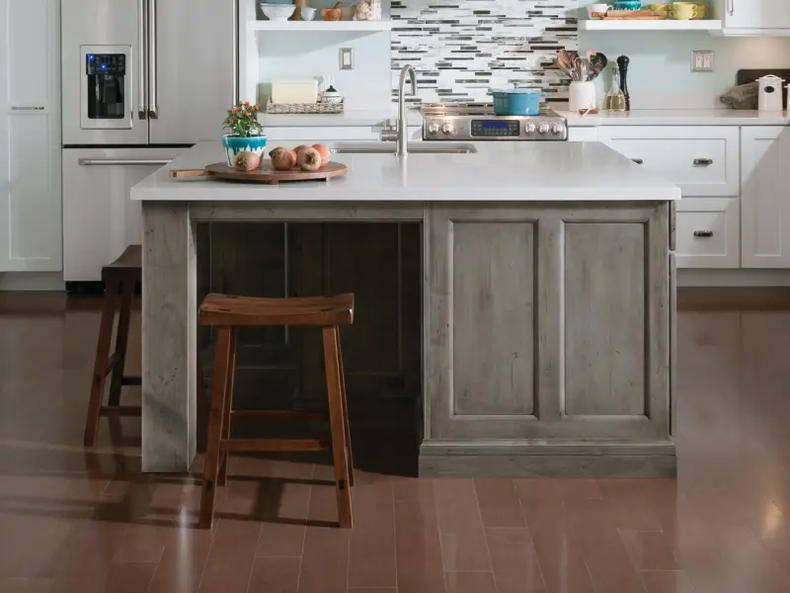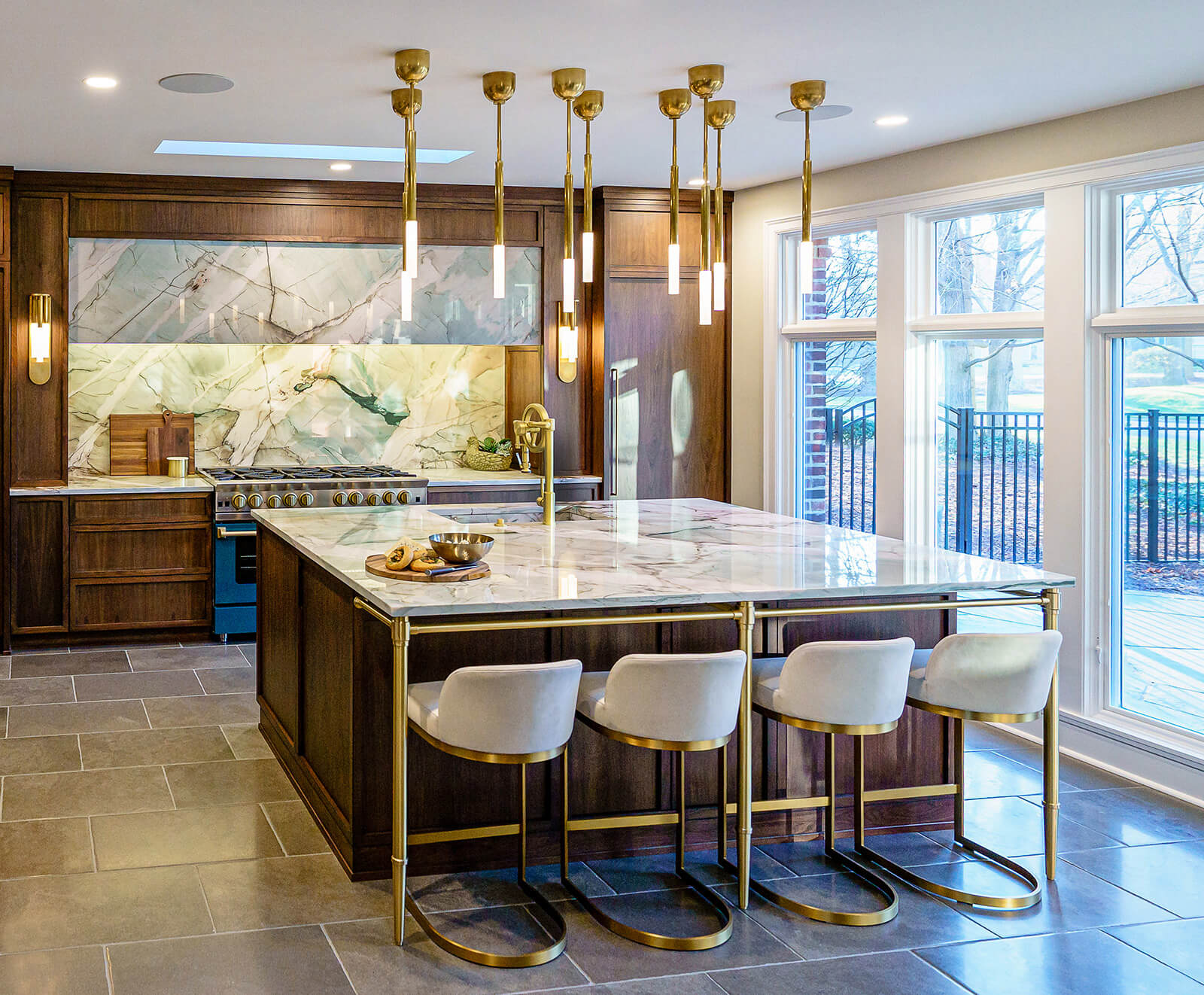Achieve the Perfect Balance of Form and Feature with Legs For Kitchen Island
Discovering the Different Designs of Legs For Cooking Area Island: What You Need to Know
In the realm of kitchen design, the choice of legs for your island is even more than a plain aesthetic decision; it dramatically influences both design and functionality. From the sleek refinement of modern-day metal to the classic beauty of standard timber, each choice offers one-of-a-kind benefits and style opportunities. Industrial styles can impart a tough personality, while rustic farmhouse legs evoke a feeling of warmth and tradition. In addition, the introduction of one-of-a-kind attractive legs enables individual expression within functional furnishings. The inquiry stays-- just how do you identify which style best aligns with your vision?
Modern Metal Legs
Modern steel legs have actually come to be a preferred choice for kitchen islands, offering both sturdiness and a sleek aesthetic. These legs are generally crafted from materials such as stainless-steel, light weight aluminum, or functioned iron, making them resistant to tear and put on, which is crucial in a high-traffic location like the cooking area. Their durable building and construction makes sure security, accommodating the weight of hefty counter tops and daily usage.
In enhancement to their toughness, contemporary metal legs been available in different styles, from minimal to industrial styles, allowing house owners to customize their kitchen islands to their special tastes. The reflective surface areas of steel can add a modern touch, improving the general brightness of the kitchen area room. Additionally, metal legs can be matched with a variety of counter top products, integrating flawlessly with granite, quartz, and even redeemed timber.
An additional benefit of steel legs is their ease of upkeep; they can be simply cleaned to eliminate any spills or stains, making certain durability and cleanliness. Overall, modern steel legs not just offer structural assistance for kitchen area islands but additionally add considerably to the visual charm, making them a popular alternative for modern kitchen area styles.
Standard Wood Legs

Typical timber legs can take various types, consisting of transformed, tapered, or square styles. Transformed legs include a rounded profile with ornate detailing, adding a touch of sophistication. Conical legs, on the various other hand, give a more structured look while keeping a traditional ambiance. Square legs provide a durable appearance, which can produce a sense of stability and weightiness in the layout.
Moreover, wood legs can be discolored or repainted to match existing kitchen cabinetry or decor, providing personalization choices that enhance the general visual of the kitchen area. Pairing these legs with a timber countertop or various other wood components can create a natural appearance, highlighting the heat and character that standard wood gives kitchen islands. Hence, conventional wood legs remain an ageless selection for those looking for beauty and functionality in their kitchen area style.
Industrial Style Legs

The versatility of commercial legs enables them to match a selection of kitchen counters, from redeemed wood to brightened concrete. Their integral toughness guarantees sturdiness, making them suitable for durable usage. Additionally, the minimal layout commonly related to industrial design legs can improve the overall area without frustrating it.
Shade choices commonly range from matte black to cleaned nickel, permitting for customization to suit private choices. Legs For browse around these guys Kitchen Island. Furthermore, industrial legs can be incorporated into various kitchen configurations, from open-concept spaces to a lot more compact layouts. This versatility makes them an eye-catching option for contemporary home owners seeking both capability and design. Ultimately, industrial style legs can transform a cooking area island right into a statement item, marrying form and feature in a harmonious fashion.
Rustic Farmhouse Legs
Rustic farmhouse legs embody a captivating blog blend of practice and warmth, making them a prominent selection for kitchens that seek to stimulate a relaxing, welcoming ambience. Defined by their strong building and all-natural materials, these legs often include wood with a distressed surface, showcasing the appeal of imperfections that features age. This aesthetic not just enhances the farmhouse style yet likewise includes character and credibility to the kitchen room.
Commonly, rustic farmhouse legs are developed with durable, beefy accounts that give considerable support for the kitchen area island. Typically crafted from redeemed timber, they add to a lasting style while using a distinct tale via their varied appearances and tones. The natural grain patterns and knots discovered in these materials improve the visual appeal and bring a sense of nature inside.
In addition to their aesthetic worth, rustic farmhouse legs can be combined with various tabletop products, such as butcher find out block or stone, producing an unified equilibrium between rustic beauty and modern-day capability. This flexibility enables house owners to personalize their kitchen area islands according to individual preferences, making certain that the room remains both stylish and useful for day-to-day use.
Special Decorative Legs
Regularly neglected, unique ornamental legs can change a basic kitchen area island into a statement piece that mirrors individual style and creativity. These legs serve not only as architectural supports but additionally as imaginative expressions that enhance the general visual of the kitchen area.
Offered in a variety of layouts, unique ornamental legs can range from elaborate wrought iron scrollwork to boldly transformed timber patterns. For those leaning towards a much more modern-day look, smooth metal legs in geometric shapes can give a minimal yet attractive appeal. Alternatively, reclaimed timber legs with artisanal describing bring warmth and personality, straightening with sustainable layout concepts.
Incorporating distinct decorative legs right into your kitchen area island enables limitless customization. Shade, texture, and kind can be controlled to harmonize with existing decoration or to present an interesting contrast. As an example, combining a rustic wood top with polished brass legs develops a striking association that draws the eye.
Inevitably, choosing special attractive legs is a chance to express personal preference while making certain capability. By focusing on both style and sturdiness, property owners can create a kitchen island that not only stands apart but also serves as a functional focal point for culinary undertakings.
Conclusion
Modern metal legs offer a smooth appearance, while standard timber legs provide warmth and personality. Industrial-style legs introduce an urban charm, and rustic farmhouse legs highlight natural charm and sturdiness.
A range of conventional wood legs can enhance the charm and warmth of kitchen islands, appealing to house owners who prefer a timeless aesthetic. Matching these legs with a wood countertop or various other wood aspects can create a cohesive look, emphasizing the heat and character that conventional wood brings to kitchen area islands. Modern metal legs provide a smooth look, while conventional timber legs offer heat and character. Industrial-style legs present an urban appeal, and rustic farmhouse legs highlight natural appeal and durability. Special attractive legs offer as a way of personalization, ensuring that the cooking area island not only supports useful usage but additionally enhances the general layout of the cooking area.